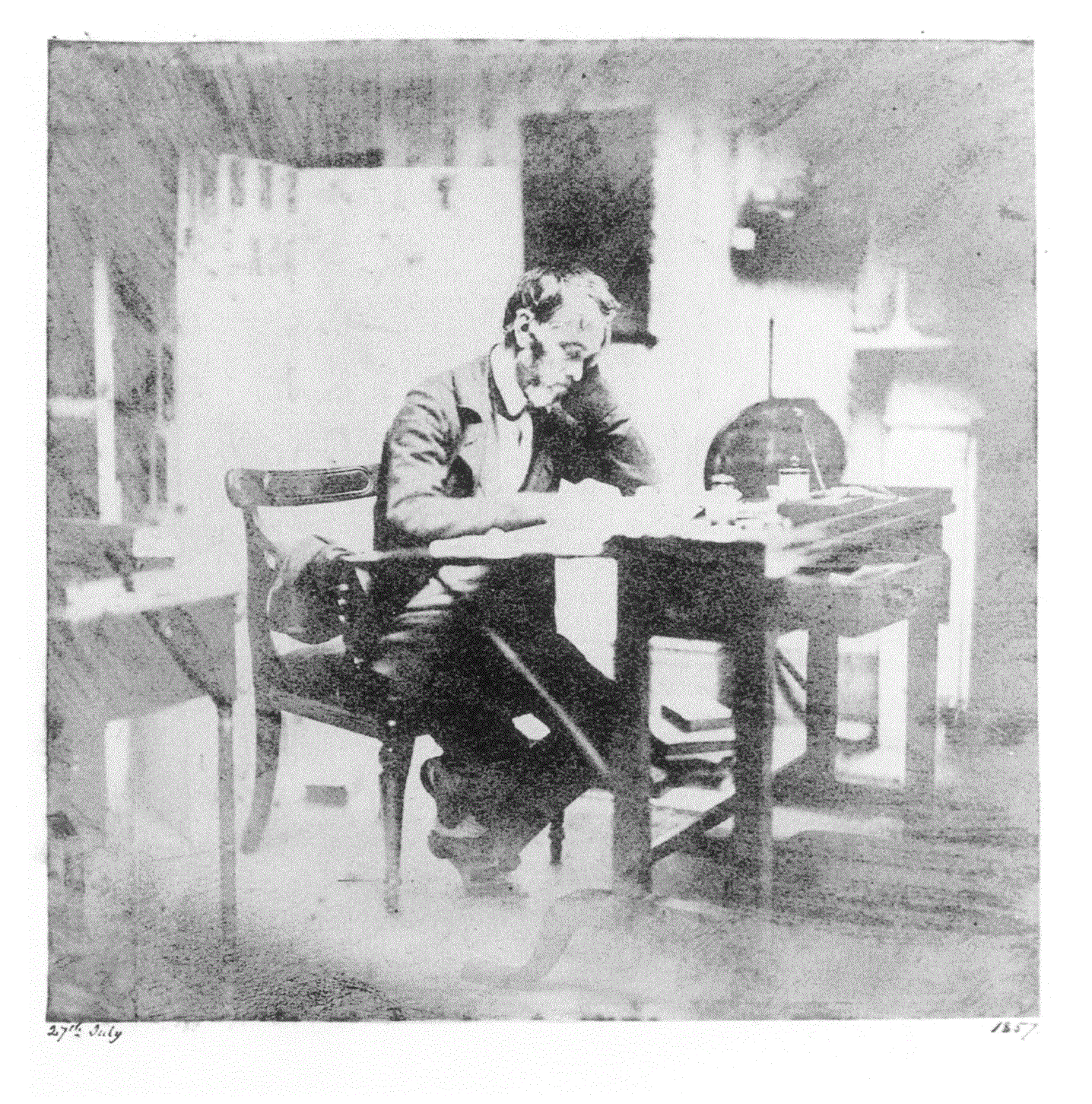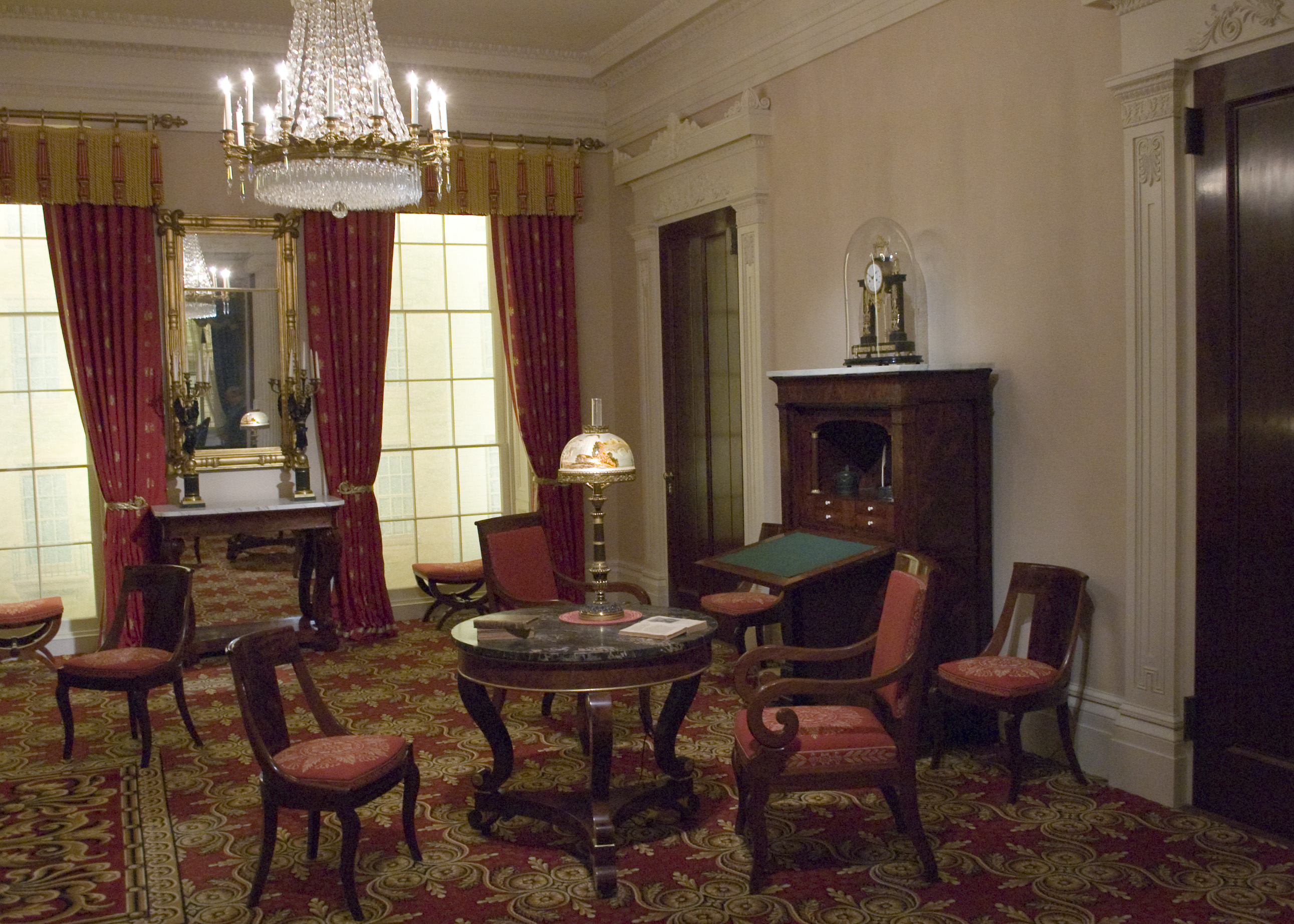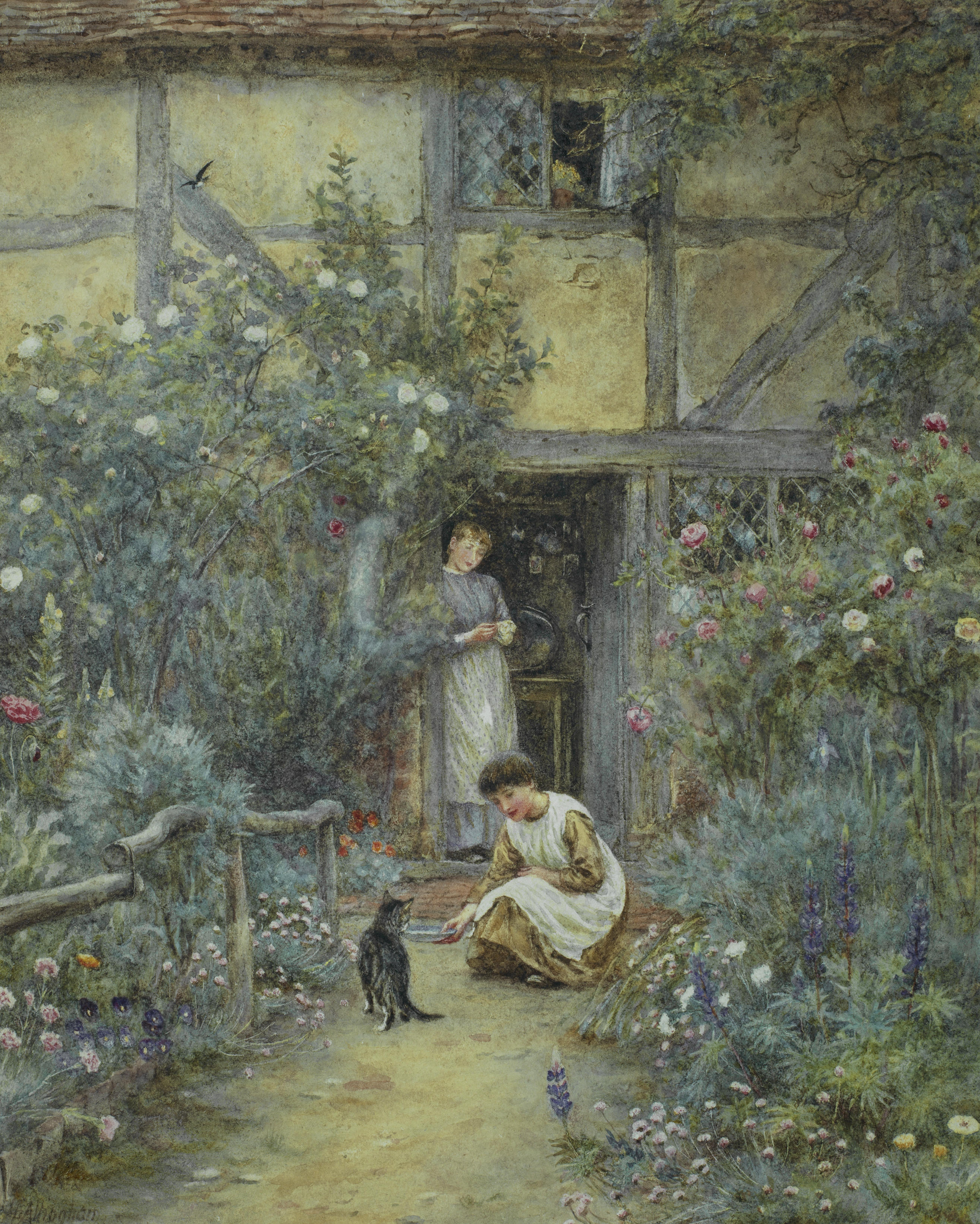|
Carlyle's House
Carlyle's House, in Cheyne Row, Chelsea, central London, was the home of the Scottish essayist, historian and philosopher Thomas Carlyle and his wife Jane from 1834 until his death. The home of these writers was purchased by public subscription and placed in the care of the Carlyle's House Memorial Trust in 1895. They opened the house to the public and maintained it until 1936, when control of the property was assumed by the National Trust, inspired by co-founder Octavia Hill's earlier pledge of support for the house.Cumming, Mark, ed. (2004). "Cheyne Row, Chelsea". ''The Carlyle Encyclopedia''. Madison and Teaneck, NJ: Fairleigh Dickinson University Press. p. 90–91. . It became a Grade II listed building in 1954 and is open to the public as a historic house museum. The Carlyles in residence In the early months of 1834, Carlyle had decided to move from Craigenputtock, the couple's residence in Dumfriesshire, Scotland, to London. He arrived in London in May, seeking his frie ... [...More Info...] [...Related Items...] OR: [Wikipedia] [Google] [Baidu] |
Cheyne Row
Cheyne Row is a residential street in Chelsea, London. It runs roughly north to south from the crossroads with Upper Cheyne Row, where it becomes Glebe Place, leading down to a t-junction with Cheyne Walk which forms an embankment of the River Thames. It was named after Charles Cheyne, 1st Viscount Newhaven (c. 1624–1698) who purchased the manor of Chelsea in Middlesex, then a rural village. Notable buildings 16–34, including Carlyle's House at No 24, are grade II* listed, and built in 1708. 22-33 are grade II listed. The grade II listed Roman Catholic parish church, Church of Our Most Holy Redeemer and St Thomas More, Chelsea is on the corner of Cheyne Row and Upper Cheyne Row. Notable residents No 24 was home to the historian Thomas Carlyle and is now known as Carlyle's House and is a National Trust property open to the public. It was later home to the actor and writer Thea Holme (1904–1980), who moved there when her husband became the house's curator. In 1833, Leig ... [...More Info...] [...Related Items...] OR: [Wikipedia] [Google] [Baidu] |
Scotland
Scotland (, ) is a country that is part of the United Kingdom. Covering the northern third of the island of Great Britain, mainland Scotland has a border with England to the southeast and is otherwise surrounded by the Atlantic Ocean to the north and west, the North Sea to the northeast and east, and the Irish Sea to the south. It also contains more than 790 islands, principally in the archipelagos of the Hebrides and the Northern Isles. Most of the population, including the capital Edinburgh, is concentrated in the Central Belt—the plain between the Scottish Highlands and the Southern Uplands—in the Scottish Lowlands. Scotland is divided into 32 administrative subdivisions or local authorities, known as council areas. Glasgow City is the largest council area in terms of population, with Highland being the largest in terms of area. Limited self-governing power, covering matters such as education, social services and roads and transportation, is devolved from the Scott ... [...More Info...] [...Related Items...] OR: [Wikipedia] [Google] [Baidu] |
Stanford Holme
Stanford University, officially Leland Stanford Junior University, is a private research university in Stanford, California. The campus occupies , among the largest in the United States, and enrolls over 17,000 students. Stanford is considered among the most prestigious universities in the world. Stanford was founded in 1885 by Leland and Jane Stanford in memory of their only child, Leland Stanford Jr., who had died of typhoid fever at age 15 the previous year. Leland Stanford was a U.S. senator and former governor of California who made his fortune as a railroad tycoon. The school admitted its first students on October 1, 1891, as a coeducational and non-denominational institution. Stanford University struggled financially after the death of Leland Stanford in 1893 and again after much of the campus was damaged by the 1906 San Francisco earthquake. Following World War II, provost of Stanford Frederick Terman inspired and supported faculty and graduates' entrepreneuria ... [...More Info...] [...Related Items...] OR: [Wikipedia] [Google] [Baidu] |
Night And Day (Woolf Novel)
Night and Day may refer to: Film, theatre, and television * ''Night and Day'' (1946 film), an American film based on the life of Cole Porter * ''Night and Day'' (1991 film), a French film directed by Chantal Akerman * ''Night and Day'' (2008 film), a South Korean film directed by Hong Sang-soo * ''Night and Day'' (ballet), an 1883 ballet with choreography by Marius Petipa and music by Ludwig Minkusllet * ''Night and Day'' (play), a 1978 play by Tom Stoppard * ''Night and Day'' (TV series), a British soap opera Literature * ''Night and Day'' (Parker novel), a 2010 novel by Robert B. Parker * ''Night and Day'' (Woolf novel), a 1919 novel by Virginia Woolf * ''Night and Day'', a defunct magazine edited by Graham Greene Music Albums * ''Night and Day'' (Joe Jackson album), 1982 * ''Night and Day'' (Red Rodney album), 1981 * ''Night and Day'' (Willie Nelson album), 1999 * ''Night and Day'', by John Davis and the Monster Orchestra, 1976 * ''Night & Day'' (Gemma Hayes ... [...More Info...] [...Related Items...] OR: [Wikipedia] [Google] [Baidu] |
Virginia Woolf
Adeline Virginia Woolf (; ; 25 January 1882 28 March 1941) was an English writer, considered one of the most important modernist 20th-century authors and a pioneer in the use of stream of consciousness as a narrative device. Woolf was born into an affluent household in South Kensington, London, the seventh child of Julia Prinsep Jackson and Leslie Stephen in a blended family of eight which included the modernist painter Vanessa Bell. She was home-schooled in English classics and Victorian literature from a young age. From 1897 to 1901, she attended the Ladies' Department of King's College London, where she studied classics and history and came into contact with early reformers of women's higher education and the women's rights movement. Encouraged by her father, Woolf began writing professionally in 1900. After her father's death in 1904, the Stephen family moved from Kensington to the more bohemian Bloomsbury, where, in conjunction with the brothers' intellectual friends, t ... [...More Info...] [...Related Items...] OR: [Wikipedia] [Google] [Baidu] |
Walled Garden
A walled garden is a garden enclosed by high walls, especially when this is done for horticultural rather than security purposes, although originally all gardens may have been enclosed for protection from animal or human intruders. In temperate climates, especially colder areas, such as Scotland, the essential function of the walling of a garden is to shelter the garden from wind and frost, though it may also serve a decorative purpose. Kitchen gardens were very often walled, which segregated them socially, allowing the gardeners, who were usually expected to vanish from the “pleasure gardens” when the occupants of the house were likely to be about, to continue their work. The walls, which were sometimes heated, also carried fruit trees trained as espaliers. Historically, and still in many parts of the world, nearly all urban houses with any private outside space have high walls for security, and any small garden was thus walled by default. The same was true of many rural ... [...More Info...] [...Related Items...] OR: [Wikipedia] [Google] [Baidu] |
History Of Friedrich II Of Prussia
''History of Friedrich II. of Prussia, Called Frederick the Great'' is a biography of Friedrich II of Prussia by Scottish essayist, historian and philosopher Thomas Carlyle. It was first published in six volumes from 1858 to 1865. Composition and publication Carlyle's interest in Frederick began when he read a history of him in 1819 and became fond of quoting his saying "Another time we will do better." He first expressed his desire to write about Frederick in a letter addressed to G. R. Gleig dated 21 May 1830, wherein he made the following (unsuccessful) proposal: :Frederick the Great, as an Author, Soldier, King and Man, well deserves to have his History written; better perhaps than Charles XII, whose Biography by Voltaire has always seemed to me one of the most delightful Books. Let your Publishers offer me Three hundred pounds, and time to heat the historico-biographical crucible and fill it and fuse it properly, and I will give them the best single Volume I can on the br ... [...More Info...] [...Related Items...] OR: [Wikipedia] [Google] [Baidu] |
Parlour
A parlour (or parlor) is a reception room or public space. In medieval Christian Europe, the "outer parlour" was the room where the monks or nuns conducted business with those outside the monastery and the "inner parlour" was used for necessary conversation between resident members. In the English-speaking world of the 18th and 19th century, having a parlour room was evidence of social status. Etymology In the early 13th century, parlor originally referred to a room where monks could go to talk, derived from the Old French word ''parloir'' or ''parler'' ("to speak"), it entered the English language around the turn of the 16th century. History The first known use of the word to denote a room was in medieval Christian Europe, when it designated the two rooms in a monastery where clergy, constrained by vow or regulation from speaking otherwise in the cloister, were allowed to converse without disturbing their fellows. The "outer parlour" was the room where the monks or nuns c ... [...More Info...] [...Related Items...] OR: [Wikipedia] [Google] [Baidu] |
Helen Allingham
Helen Allingham (née Paterson; 26 September 1848 – 28 September 1926) was a British watercolourist and illustrator of the Victorian era. Biography Helen Mary Elizabeth Paterson was born on 26 September 1848, at Swadlincote in Derbyshire, the daughter of Alexander Henry Paterson, a medical doctor, and Mary Herford Paterson. Helen was the eldest of seven children. The year after her birth the family moved to Altrincham in Cheshire. In 1862 her father and her three-year-old sister Isabel died of diphtheria during an epidemic. The remaining family then moved to Birmingham, where some of Alexander Paterson's family lived. Paterson showed a talent for art from an early age, drawing some of her inspiration from her maternal grandmother Sarah Smith Herford and aunt Laura Herford, both accomplished artists of their day. Her younger sister Caroline Paterson also became a noted artist. She initially studied art for three years at the Birmingham School of Design. She spent a year at ... [...More Info...] [...Related Items...] OR: [Wikipedia] [Google] [Baidu] |
James Abbott McNeill Whistler
James Abbott McNeill Whistler (; July 10, 1834July 17, 1903) was an American painter active during the American Gilded Age and based primarily in the United Kingdom. He eschewed sentimentality and moral allusion in painting and was a leading proponent of the credo "art for art's sake". His signature for his paintings took the shape of a stylized butterfly possessing a long stinger for a tail. The symbol combined both aspects of his personality: his art is marked by a subtle delicacy, while his public persona was combative. He found a parallel between painting and music, and entitled many of his paintings "arrangements", "harmonies", and "nocturnes", emphasizing the primacy of tonal harmony. His most famous painting, ''Arrangement in Grey and Black No. 1'' (1871), commonly known as ''Whistler's Mother'', is a revered and often parodied portrait of motherhood. Whistler influenced the art world and the broader culture of his time with his theories and his friendships with other lea ... [...More Info...] [...Related Items...] OR: [Wikipedia] [Google] [Baidu] |
London Library
The London Library is an independent lending library in London, established in 1841. It was founded on the initiative of Thomas Carlyle, who was dissatisfied with some of the policies at the British Museum Library. It is located at 14 St James's Square, in the St James's area of the City of Westminster, which has been its home since 1845.Libraries ." ''''. Retrieved on 21 January 2009. Membership is open to all, on payment of an annual subscription, and life and corporate memberships are also available. As of December 2021 the Library had over 7000 members. [...More Info...] [...Related Items...] OR: [Wikipedia] [Google] [Baidu] |
Georgian Architecture
Georgian architecture is the name given in most English-speaking countries to the set of architectural styles current between 1714 and 1830. It is named after the first four British monarchs of the House of Hanover—George I, George II, George III, and George IV—who reigned in continuous succession from August 1714 to June 1830. The so-called great Georgian cities of the British Isles were Edinburgh, Bath, pre-independence Dublin, and London, and to a lesser extent York and Bristol. The style was revived in the late 19th century in the United States as Colonial Revival architecture and in the early 20th century in Great Britain as Neo-Georgian architecture; in both it is also called Georgian Revival architecture. In the United States the term "Georgian" is generally used to describe all buildings from the period, regardless of style; in Britain it is generally restricted to buildings that are "architectural in intention", and have stylistic characteristics that are typical o ... [...More Info...] [...Related Items...] OR: [Wikipedia] [Google] [Baidu] |










